The marketing mix aims at making your marketing positioning concrete. Often associated with the term “4Ps“, the objective of the marketing mix is to make your positioning tangible each time your brand is in contact with the consumer (the so-called “touchpoints”).
This article explains the difference between 4P and 7P, explains each facet of the marketing mix with numerous examples, and ends with a detailed case study.
To go even further, we suggest you consult our online resource, where we detail and illustrate all the factors to study for each of the 7Ps. We have also published case studies analyzed according to the 7Ps: Rimac electric car, high-end watchmaking, fruit juice, cosmetics.
Finally, don’t miss our free pdf marketing mix guide with tons of exemples. It’s free to download.
Summary
- The 4P: definition
- Difference between 4P and 7P
- P1: Product
- P2: Price
- P3: Promotion
- P4: Place
- P5: People
- P6: Process
- P7: Physical Evidence
- Complete case study (Ryanair)
- Marketing mix guide (free download)
Marketing mix: what are the 4Ps?
The term “marketing mix” is often associated with another acronym: the 4Ps. The two have become almost interchangeable since Philip Kotler popularized the concept. “4Ps” is the English acronym for the 4 operational facets of marketing that make your company’s positioning a reality. They all begin with the letter “p” in English:
- “Product”: all aspects related to the product (the Product Policy)
- “Price”: the price positioning of your product concerning its competitors (the Price Policy)
- “Promotion”: the aspects related to promotion such as advertising or the ways to make people aware of the existence of the product (the Communication Policy)
- “Placement”: aspects related to the distribution of your product (the Distribution Policy)
If Kotler popularized the 4Ps, its paternity goes to E. Jerome McCarthy (1960). The latter’s genius was to summarize these 4 facets in the form of an acronym that has now become part of everyday marketing language. Since the 1970s, however, marketing has evolved considerably. The 4Ps have become, if not obsolete, at least seriously incomplete. In the 1980s, marketing theorists called for a revision of the 4Ps, leading to the birth of the 7Ps.
History: how the marketing mix went from 4Ps to 7Ps
- In 1960, McCarthy invented the 4P model (Product, Price, Place, Promotion)
- In 1987, Judd proposed a “human” component in the form of a fifth P (“people”).
- In 1986, Kotler added “political power” and public opinion (“public opinion formation”)
- It was in 1980 that the 7Ps took shape. Booms and Bitner proposed to add three “P’s”: “people” (to cover the human aspects of relationship marketing), “physical evidence” (a material component of the service), and the “process” part (interaction with the service user).
Marketing mix: what is the difference between the 4Ps and the 7Ps?
Digitalization has made the 4P’s seriously outdated. The 4Ps were indeed well adapted to a “physical” world but much less to e-commerce. They have therefore been supplemented by 3 new “P’s”:
- People: aspects related to human interactions through the multiple channels available today (primarily digital)
- Process: the processes put in place to guide interactions, especially those related to services.
- Physical Evidence: the tangible elements put forward to convince the customer (sales outlet layout, customer reviews, etc.)
To help you implement the marketing mix, we have prepared a detailed example at the end of this article.
A recent example (2023): the collaboration between Yayoi Kusama and Vuitton
The famous Japanese artist collaborates once again in 2023 with Louis Vuitton. This collaboration allows us to illustrate several facets of the marketing mix:
- Physical evidence: the Vuitton flagship store, already famous for its spectacular window displays, is adorned with a unique ephemeral decor. The facade is studded with round motifs, symbols of Yayoi Kusama’s work, and a huge inflatable effigy in her image.
- Product: the collaboration is realized through a special edition of the famous Vuitton bag. The monogrammed canvas is adorned with round patterns. This is not the first time that Vuitton has carried out this kind of collaboration. We will remember, for example, the one conducted with the article by Jeff Koons.
- Promotion: this collaboration is making news, which results in a spectacular staging of the sales outlet on the Champs-Elysees and a limited edition product. This operation can, therefore, also be analyzed from the perspective of the Promotion P.
The P in “Product” (Product Policy)
The first of the 7Ps is, of course, the product. The term product does not mean only a physical object. It can also be a service.
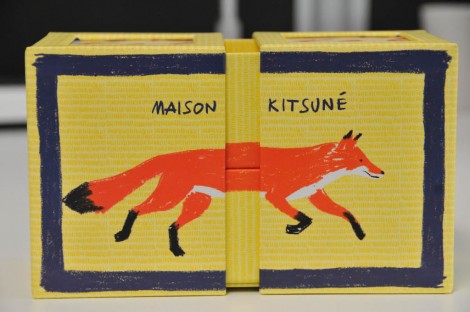
To cover this first “P,” you will have to describe the product’s characteristics (design, packaging, functionalities), its place in the range, as well as the services that are attached to it (after-sales service, repair, end-of-life recycling).
Try to explain the characteristics of the product that make it different, unique, and that are part of its identity.
Also, think about the packaging, which is often an integral part of the customer experience, as it is at Apple.

The P in “Price” (Pricing Policy)
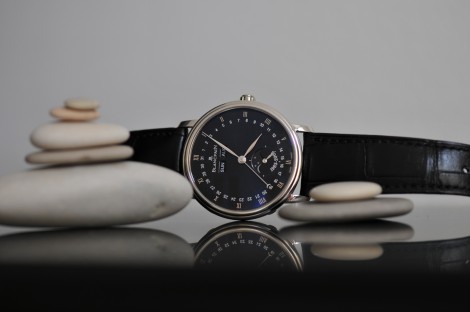
The second of the 7Ps is central since it is about price.
Here, the aim is to describe how the company manages the different facets of “price” in its market. This starts with a description of the pricing strategy adopted by the company. The most well-known are the following:
- costs + margins: you add a margin to your production costs
- value-based: the price is determined according to the consumer’s perception of value
- competitive: you realize using the competition research and fix your price according to one of your competitors
The pricing strategy, once determined, will have to be declined in a “price tactic.” The pricing tactic is the operational extension of the pricing strategy. It describes how, in concrete terms, the pricing strategy is applied in the field. In this respect, the strategy of Swiss watchmakers is fascinating. They create a shortage that supports demand by voluntarily limiting production and choosing to whom they want to sell. Some, like Patek Philippe, also support the price level by buying back their older models at a high price to increase their desirability. The price of the products then soars on the parallel market, creating speculative bubbles like the one we described in this survey. The graph below shows the effect of the pricing tactics of Rolex, Audemars Piguet, and Patek Philippe on the price of their men’s watches.
Once the overall strategy is described, you will need to describe the other aspects of the marketing mix that depend on price:
- the pricing policy towards your intermediaries
- the discount policy towards your customers
- the payment policy and possible facilities offered to your customers to acquire your products
The P of “Promotion” (Communication Policy)
The third “P” is “Promotion.” It covers the aspects related to the company’s communication and the strategies used to make itself known on the market. The result is measured by the notoriety of the company among its target customers.
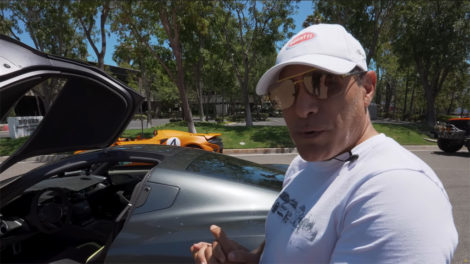
It is helpful to start by describing, in broad lines, the communication strategy followed by the company. What is the company’s position on advertising, and does it realize using advertising? Are specific media used (sponsoring, influencers, etc.)? If so, which channels are favored (digital, radio, TV, press, Out-Of-Home), and according to what logic are these channels selected?
When advertising investments are made, the repetition of messages plays a role in the persistence of the information in the consumer’s mind. Therefore, the analysis should try to clarify which repetition is aimed at, which will make it possible to deduce the advertising pressure that the company wants to impose and the importance of advertising in its global strategy.
In addition to advertising, the company can also promote itself through inbound marketing. It is, therefore, a matter of attracting prospects naturally. Inbound marketing is a tactic that materializes in the digital space. The goal is to improve natural referencing (SEO) to capture the attention of Internet users and attract them to the company’s website. It is, therefore, necessary to analyze whether the company invests in content marketing and, if so, which online media are privileged.
The P of “Place” (Distribution Policy)
The fourth “P” concerns the distribution policy (“Place” or “Placement” according to the 4P terminology). In this part, we analyze how the product or service is distributed.
There are three main distribution strategies:
- direct distribution
- distribution via a third-party network
- hybrid (a mix of the 2 previous ones)
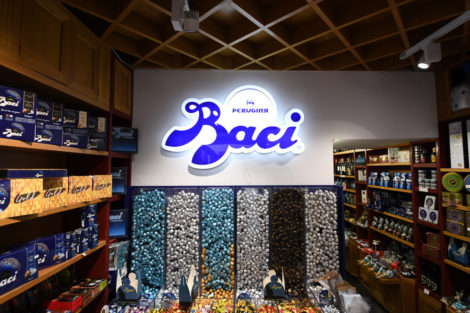
Nespresso distributes its coffee capsules through its own stores (direct distribution). Most food manufacturers sell their products through third-party networks (retailers). However, some of these manufacturers invest in their own stores (Perugina, Lindt, M&M, ….). This is a hybrid strategy.
Once the broad lines have been drawn, the analysis of the marketing mix requires going into detail. It is advisable to study the opportunity of franchising, especially when the ambitions are high in terms of the geographical distribution of products. Covering a large territory requires significant resources. Therefore, a start-up with a product in high demand may have to turn to the franchise model to accelerate its deployment. This is a widespread model in the fast-food industry.
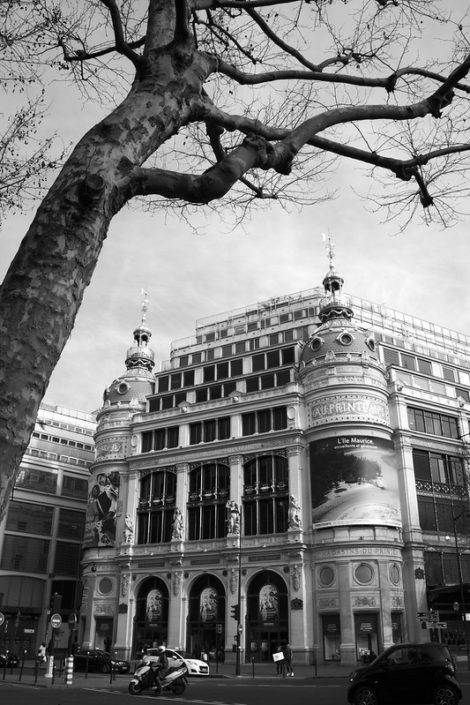
Crédits : gibs02 via Flickr.
Outsourced distribution (via a franchise network or third-party distributors) also has marketing coverage advantages. Some brands may naturally attract customer segments that could represent additional sales for your company. Regardless of the distribution strategy chosen, careful consideration must be given to the location of sales outlets (in the case of physical sales). The research on implementing physical commerce is of particular importance because of the decline in the number of visitors to physical sales outlets. Over the last 10 years, city centers have lost 50% of their pedestrian traffic, which inevitably affects profitability.
If the company opts for e-commerce (which seems essential), particular attention must be paid to the logistical aspects. In particular, request what logistical processes need to be implemented to meet customer expectations regarding product availability and delivery times. Customer requirements are constantly increasing. They are shaped by the delivery policies of the industry’s giants (Amazon and others), whose logistical excellence allows them to shorten delivery times even further. For SMEs that lack operational excellence, the use of third-party fulfillment services can be an enjoyable (but costly) alternative to compete with the giants.
The P of “People” (Relationship policy)
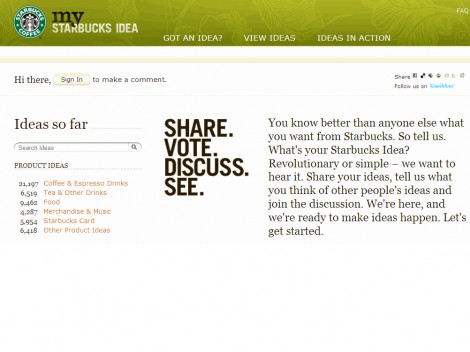
The relational policy (the fifth “P”) is part of the 3 new “Ps” proposed by Booms and Bitner in 1981. The recognition of the role of the human being coincides with the emergence of relational marketing. We understand that the human component can contribute positively to the quality of service and customer satisfaction/loyalty.
In this part of the marketing mix, we will focus on understanding how its marketing positioning can be materialized through its human component.
We will study the human part in the success of the company, and the satisfaction of the customer, as well as the role, played by the employees to transmit the values of the brand.
In the digital era, the relational policy is no longer only in B2C. It also materializes through C2C (Consumer To Consumer) interactions. Customers become ambassadors for the company and sometimes even play essential roles. Ryanair, for example, has set up a customer advisory board. Hollister, a medical equipment manufacturer, has created its Vivre+ network to create links between patients through activities organized throughout France. The customer thus becomes an essential component of the marketing strategy. They become a full-fledged player, just like the employee.
The P of “Process” (the processes related to the service)
This part of the marketing mix is about describing and analyzing the processes surrounding the service.
To make your analysis enjoyable, you should focus on the most distinctive elements of the processes.
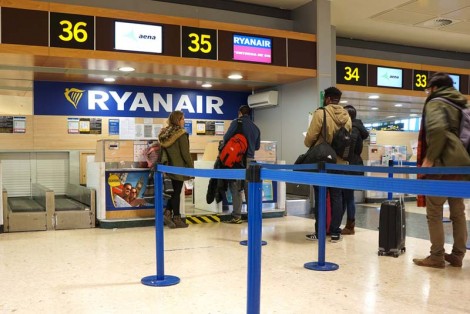
In the case of a low-cost airline (see case study), we will look at the role of processes in the business model’s success.
When the marketing positioning is the opposite (luxury), the sales processes play a significant role. The attitude, gestures, and behavior of salespeople are codified to align with the values embodied.
Your marketing mix analysis can quickly skim over certain aspects and should go into detail when justified.
The P of “Physical evidence”

The last of the 7Ps is called “physical evidence.” In the spirit of the marketing mix, it is the tangible elements with which the customer is in contact when he buys the product.
These elements can be linked to the sales outlet itself (its design, its layout, the sound/smell / visual atmosphere), the objects found there, or the employees themselves (specific clothes, for example). The brand Abercrombie & Fitch, for example, became famous for the olfactory and sound ambiance of its sales outlets. Its employees, chosen for their “visual” qualities, worked shirtless.

If we immediately think of the attributes of the sales outlet, we must not forget the digital space. Online reviews are now part of the “proof” that the customer integrates before making a decision. The delivery can also be an important moment to comfort the customer in his choice. In this article, we have given 3 examples of companies that use delivery as an emotional touchpoint with the customer: the wine estate Le Cazal that adds a sprig of wild thyme to its deliveries, Coolblue that sends a personalized postcard, and Archiduchesse that completes its orders with some “goodies.”
Case study: analysis of Ryanair’s marketing mix
In this research we propose to analyze the marketing mix of Ryanair, the Irish low-cost airline which is today the n°1 airline in Europe.
| Marketing Mix (7Ps) | Analysis |
| “Product” | The “product” proposed is low-cost air travel. The services offered are reduced to a minimum. The additional services (specific seat, catering onboard, …) are all paying to increase the company’s margin. The product’s design is remarkable in the sense that the travel conditions are reduced to their simplest expression. On the other hand, Ryanair’s planes connect mostly to secondary airports. Guarantees are reduced to the legal minimum, and Ryanair has a negative reputation in this area, as it has been called to order several times. Indeed, Ryanair did not apply the legal requirements for passenger refunds. |
| “Price” | Ryanair’s pricing strategy can be seen as a combination of operational optimization (optimizing aircraft load factors) and revenue optimization (notably through the sale of additional services). Price is a central element of Ryanair’s strategy. The tactic applied is a floor price and the sale of optional services (choice of seats, food, insurance, rental car, luggage, etc.), which increase the final price and the margin. No discount is proposed, and payment by credit card is “sanctioned” by an additional premium. The price is set according to that of competitors for similar destinations. Ryanair will always propose a lower departure price. |
| “Promotion” | Ryanair uses multiple communication channels. Their advertisements are characterized by often cheeky messages that trigger ethical debates with control panels. The expression “Say good or say bad, but mostly talk about me” seems to be very appropriate.
Ryanair also uses more informal channels to cultivate its “brand image” and make people talk about it:
|
| “Place” | The distribution of Ryanair tickets is entirely focused on e-commerce. Agreements exist with third-party platforms to sell tickets, but these are primarily sold on Ryanair’s website. The geographical coverage is, for the moment, limited to Europe and North Africa. The proposed destinations cover 37 countries and 216 cities. |
| “People” | Ryanair employees are the most visible face of the Ryanair brand to customers. Contrary to other airlines, they are little known for their interpersonal skills. In this sense, they “fit” quite well with the “low-cost” image of the Irish company. If the (often negative) opinions on Ryanair abound on the web, the company does not provide any forum to collect them. Aware of the need to improve its image, the company has recently set up a customer advisory committee. This committee will allow a few selected customers to interact and give their opinions on its orientation. |
| “Process” | The process part is essential for Ryanair. Indeed, the company’s success is based mainly on operational excellence. The company has chosen a single aircraft model to reduce maintenance costs. It imposes precise procedures (boarding, disembarking) on its customers and crews to increase the frequency of aircraft rotation. In doing so, they reduce downtime and improve the profitability of their equipment. |
| “Physical Evidence” | The planes are Ryanair’s “sales outlet.” This is where the “product” takes shape. The atmosphere is unique: spartan furnishings, flashy colors, loud announcements… it is the opposite of a traditional airline. The ritual of the little music at landing is immutable to remind the passenger that Ryanair arrives on time. And the passengers love it because they applaud loudly, a custom unthinkable in another airline’s plane. |
Marketing Mix guide (free download)
marketing-mix-guide-exemplesPosted in Marketing.
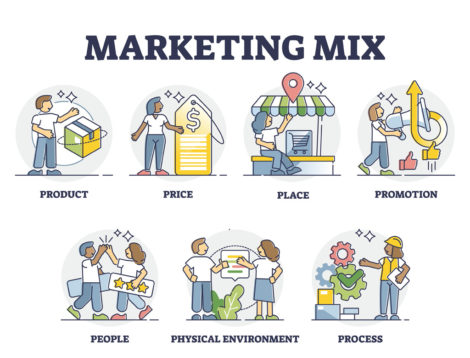



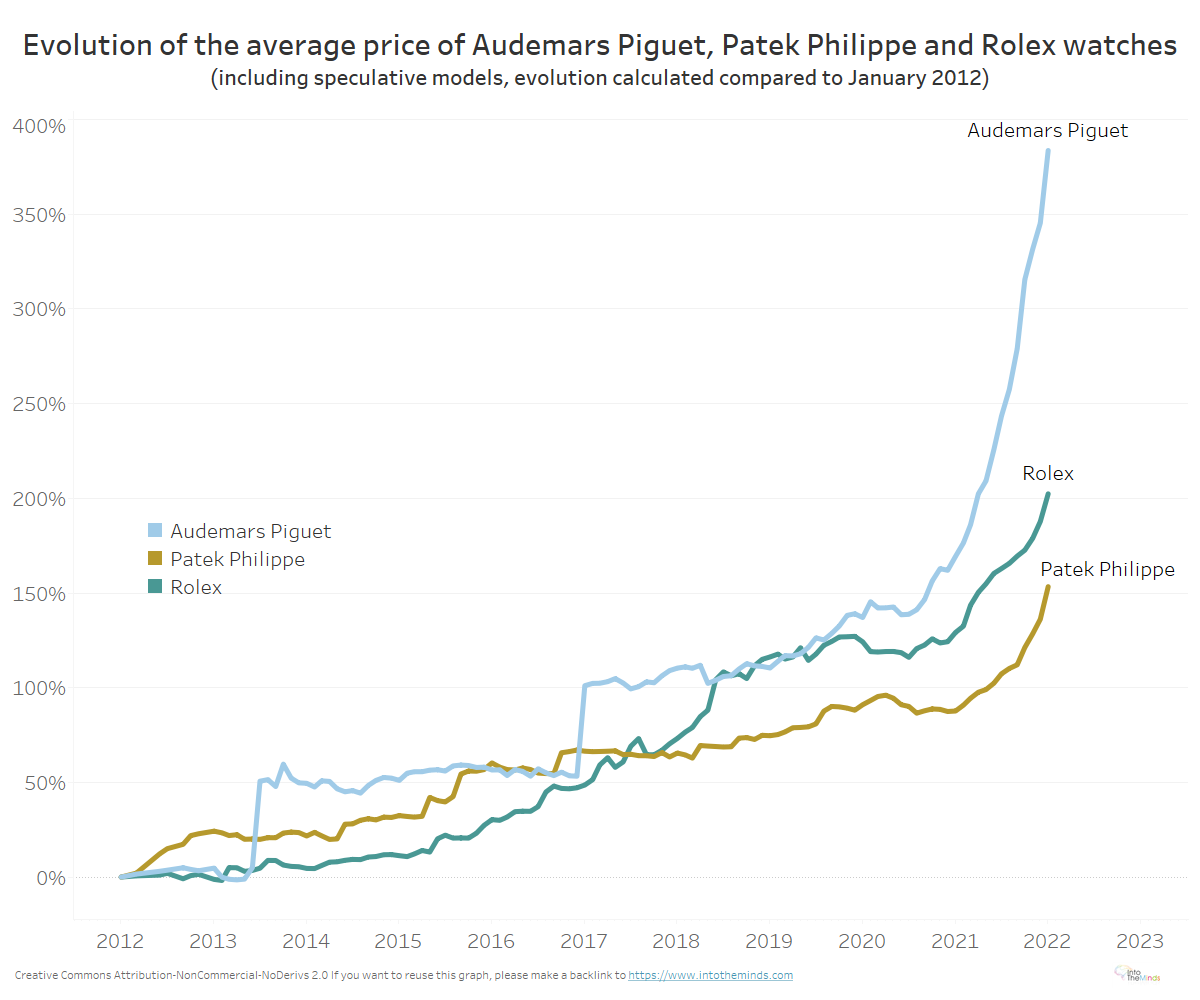





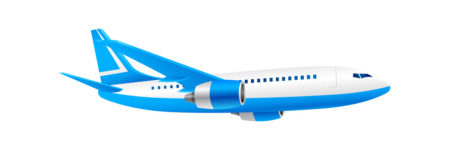
20 February 2022
Amazing stuff. I really found this article very interesting and helpful. The case study at the end of the article really helped to drive home the points raised in each of the elements of the 7 Ps. I say a big thank you to Dr Pierre-Nicolas S. Merci beaucoup.
21 February 2022
You’re welcome. THank you for your kind words. You can find even more here : https://www.intotheminds.com/blog/en/marketing-mix-guide/